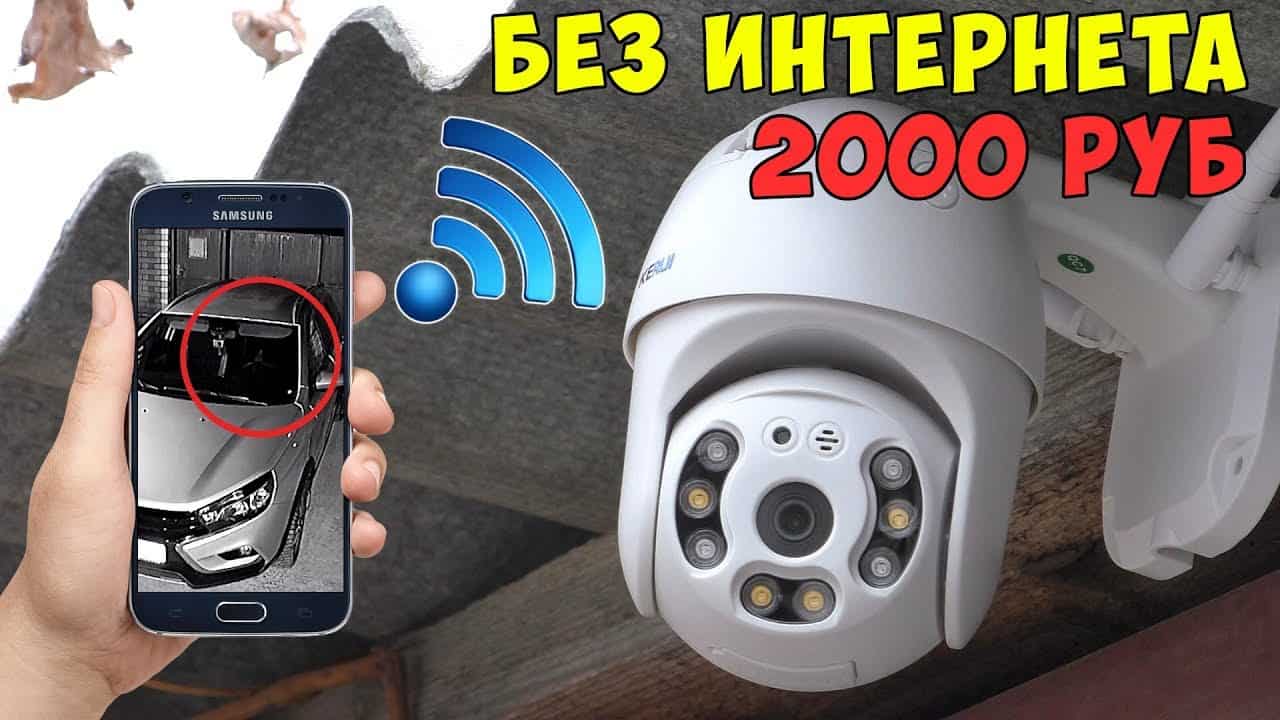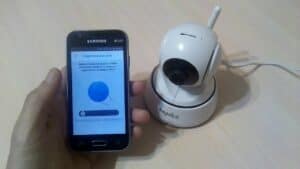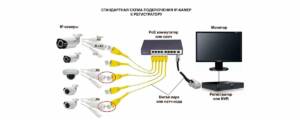A Wi-Fi camera is a device that can transmit video and audio via a Wi-Fi network. It allows the user to access video surveillance from anywhere with an internet connection. A Wi-Fi camera usually has a built-in microphone and speaker, as well as the ability to record video that can be saved on any device. The principle of operation of a Wi-Fi camera is based on Wi-Fi wireless technology. The camera connects to a Wi-Fi network and transmits video and audio to a server, which can be remote or located inside the house. This allows users to monitor their home, children, or pets from anywhere in the world. One of the main features of a Wi-Fi camera is remote access to video surveillance via a mobile application or web interface. This allows users to receive notifications about motion or sound in a certain area, as well as watch live recordings or saved video files. In addition, Wi-Fi cameras can have various features such as night vision, two-way communication, motion or sound detection, and the ability to control the pan and tilt of the camera. These features make a Wi-Fi camera a useful tool for increasing the level of security and comfort in your home or office. Overall, a Wi-Fi camera is a simple and convenient way to access video surveillance at any time and from anywhere in the world. Its operating principle is based on Wi-Fi wireless technology, which allows users to monitor their home or office using a mobile application or web interface. Wi-Fi cameras can have various features that make them useful tools for increasing the level of security and comfort. Benefits of Using a Wi-Fi Camera
A Wi-Fi camera is a device that can connect to the Internet via a Wi-Fi connection. It allows you to transmit video and sound in real time to devices connected to the Internet.
One of the main advantages of using a Wi-Fi camera is the ability to remotely access the monitored object. You can view video from the camera anywhere and anytime using your mobile device or computer. This is especially convenient if you are in another city or country and want to check what is happening in your home or workplace.
Moreover, the Wi-Fi camera can be used to provide security in your home or office. You can set up motion or sound alerts to receive notifications on your cell phone or email if the camera detects unusual activity.
Another advantage of a Wi-Fi camera is the ability to use it as a wireless video surveillance system. For example, you can set up multiple cameras to monitor different places in your home or office and view all the videos on one screen.
And finally, the Wi-Fi camera is a simple and convenient device for creating video blogs or streaming. You can use the camera to record video and stream it in real time to your social media page or YouTube.
Overall, there are many benefits to using a Wi-Fi camera and it can be useful for both personal use and business. With its help, you can ensure security, control objects and create video content without leaving your home.
How to connect a Wi-Fi camera to the Internet
To connect a Wi-Fi camera to the Internet, you need to follow a few simple steps. First, make sure that your camera has a Wi-Fi module and the appropriate software to set up the connection.
1. Connect the camera to a power source and turn it on.
2. Turn on Wi-Fi on the device that will be used to set up the camera.
3. Find the Wi-Fi network created by your camera in the list of available networks and connect to it.
4. Open a browser on your device and enter the camera's IP address to open its web interface.
5. Enter the Wi-Fi settings menu and select the network you want to connect to.
6. Enter the password for the selected network and save the settings.
7. After connecting the camera to a Wi-Fi network, you can remotely control it via the Internet using special software.
With the right Wi-Fi setup, the camera can be used for a variety of tasks, such as monitoring pets, children, or home security. By following simple steps, you can easily connect your Wi-Fi camera to the Internet and start monitoring it remotely.
How to set up a Wi-Fi camera for remote access
To access your Wi-Fi camera remotely, you need to follow a few simple steps. First, you need to install an application on your smartphone or computer that supports remote access to the camera. Then you should connect the Wi-Fi camera to the Internet using a Wi-Fi router.
To connect the camera to the Internet, you need to go to the camera settings and select the Wi-Fi network connection mode. Then you need to enter the name and password of your Wi-Fi network, after which the camera will automatically connect to the Internet.
After successfully connecting the camera to the Wi-Fi network, you need to register it in the application on your device. To do this, you need to launch the application and select the 'Add new device' option. Then you need to enter camera information, such as IP address, port and username/password.
After registering the camera in the application, you can start viewing and controlling it remotely. To do this, you need to open the application and select the camera you want to view. You can then control the camera, change its settings, and access your recordings.
By setting up your Wi-Fi camera for remote access, you have the ability to monitor your home or office at any time and from anywhere. This is very convenient and allows you to be confident in the safety of your property and loved ones.
How to choose the best Wi-Fi camera for your home
If you decide to purchase a Wi-Fi camera for your home, then you need to decide what functions you need. There are many models of Wi-Fi cameras that have various features such as night vision, two-way audio, motion sensors and much more.
Before purchasing a Wi-Fi camera for your home, you need to make sure that it is compatible with your router and smartphone. It is also worth considering the camera resolution and viewing angle to ensure it covers all the necessary areas of your home.
Don’t forget also about ease of use and the availability of a mobile application to control the camera. Choose models with a good interface and easy setup so that there are no problems during installation and use.
It is also important to consider the cost of the camera and its quality. It is better to choose models from reliable manufacturers who provide a guarantee for their products.
When choosing the best Wi-Fi camera for your home, consider all the factors listed above and choose the model that best suits your needs and budget.
What features are available when using a Wi-Fi camera?
Wi-Fi cameras are devices that allow users to record videos and photos and transfer them to a remote server or mobile device. They offer a wide range of features that make them not only convenient, but also highly functional.
Among the main functions that are available when using a Wi-Fi camera are:
1. Wireless data transmission – Wi-Fi cameras can transmit data to a remote server or mobile device without the use of wires.
2. Remote Control – Users can control the camera via mobile app or web interface. They can change settings, control zoom and focus, and view video in real time.
3. Motion Detector – Wi-Fi cameras can be set to alert the user when motion is detected. This allows users to monitor what is happening in their absence.
4. Cloud storage – Many Wi-Fi cameras offer cloud storage functionality. This allows users to keep videos safe and conveniently access them at any time and from any device.
5. Infrared night photography – Wi-Fi cameras can be equipped with infrared illumination, which allows you to record videos and photos in low-light conditions.
Overall, Wi-Fi cameras offer a variety of features that make them not only convenient, but also quite useful for various tasks. They can be used to monitor a home, office or store, as well as to create video content or conduct online broadcasts.
Read further:






